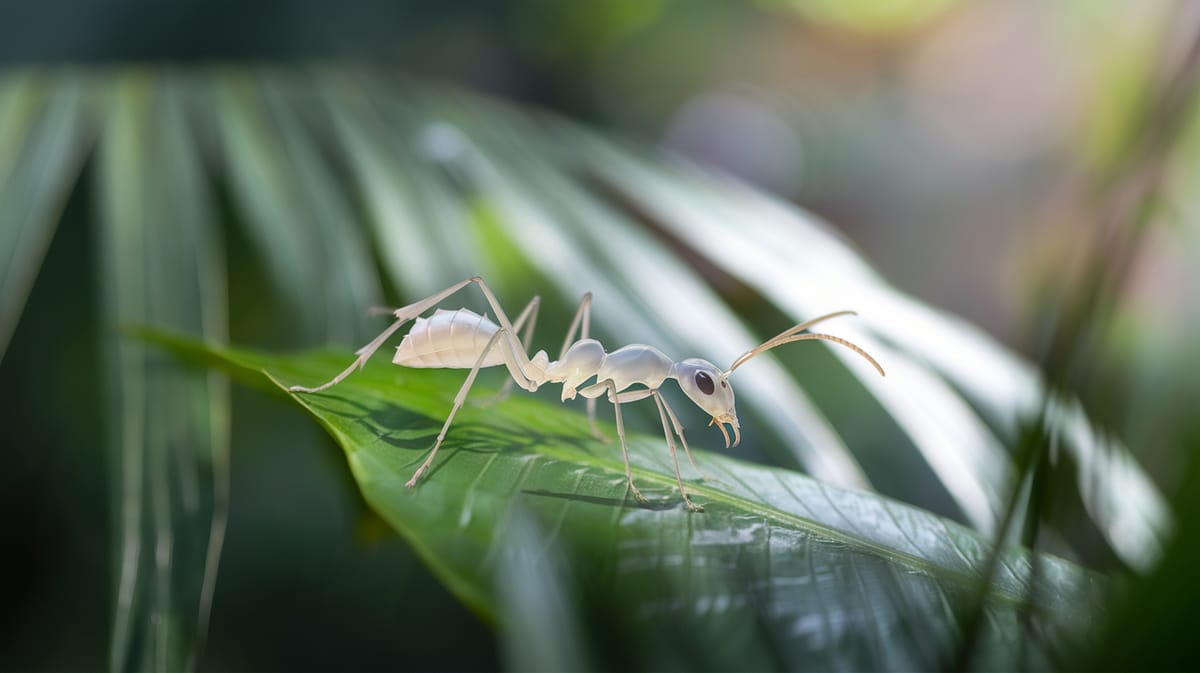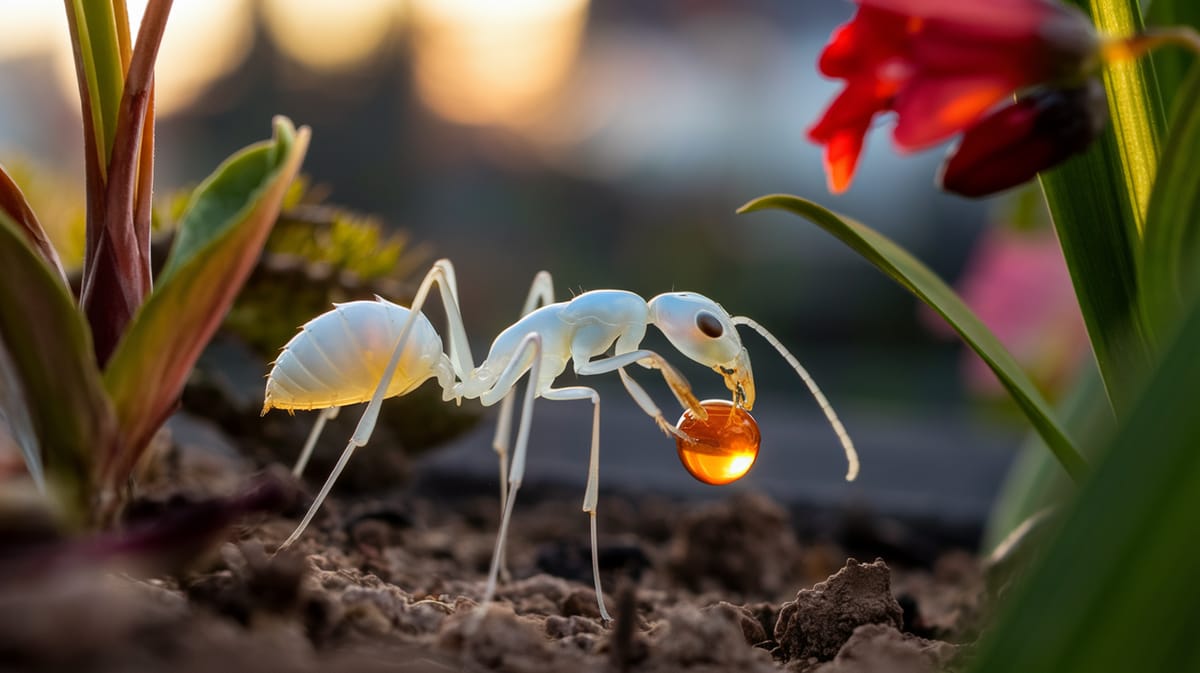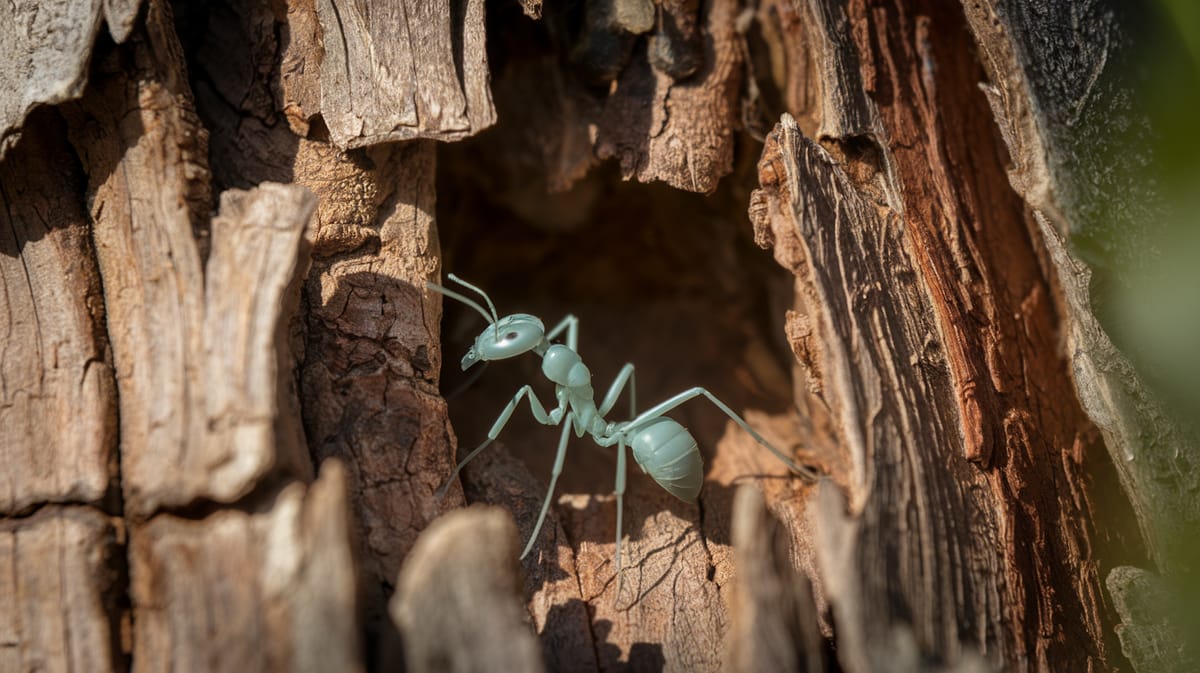Ghost Ant
Translucent yet tenacious, the Ghost Ant thrives in warm climates, often forming extensive colonies. Known for its sweet tooth, this ant plays a vital role in ecosystem nutrient cycling.

Key Insights at a Glance
Did You Know?
Taxonomy & Classification
Ghost ants exhibit incredible adaptability with their translucent bodies, allowing seamless integration into diverse environments, reflecting their evolutionary success. Let's understand the evolutionary journey and classification of these remarkable decomposers.
Global Presence
Ghost ants, Tapinoma melanocephalum, thrive on every continent except Antarctica, showcasing their adaptability and invasive potential.
Evolutionary Adaptation
Originating in the Old World tropics, ghost ants have adapted to urban environments, spreading rapidly through human activity.
Lifecycle and Growth
A remarkable journey of transformation from Egg to Adult.
Egg
Ghost ant eggs are pale and translucent, providing vital nourishment as embryos develop rapidly inside before hatching.
Larva
Larvae are fed by worker ants and grow significantly, shedding skin multiple times to support increasing size.
Pupa
Pupae transition from larval form to adult, undergoing significant morphological changes inside a protective cocoon.
Adult
Adults emerge fully developed, ready to forage and contribute to colony maintenance and expansion through complex social behaviors.
Dietary Habits
A highly adaptable forager with diverse feeding habits, this insect primarily consumes sweet substances and small insects.
| DIET TYPE | DESCRIPTION |
|---|---|
| Primary Diet | Primarily consumes honeydew from aphids, sugary foods, and sap, showcasing a preference for sweet substances. |
| Secondary Diet | Regularly feeds on dead insects, exploiting available protein sources to support colony growth and maintenance. |
| Occasional | Occasionally scavenges on fruits, meat, or household food scraps, depending on environmental availability and opportunity. |

Behaviour and Adaptations
Discover the fascinating traits that help the Ghost Ant thrive in its environment.
Camouflage Mastery
Ghost Ants' translucent bodies make them nearly invisible, aiding in predator avoidance.
Cooperative Foraging
Ghost Ants work collectively to efficiently locate and transport food.
Adaptable Diet
Ghost Ants consume various foods, from sweets to proteins, ensuring survival in diverse habitats.
Ecosystem Impact
Ecosystem Impact
Natural Pest Control
Ghost Ants manage pest populations by preying on small insects.
Nutrient Recycling
They aid in decomposing organic matter, enriching soil quality.
Biodiversity Support
Ghost Ants serve as prey for various predators, sustaining food web dynamics.
Conservation Challenges
Understanding and addressing the major threats to Ghost Ant populations.
Chemical Exposure
Pesticides contaminate food sources and habitats, reducing Ghost Ant populations.
Habitat Fragmentation
Urban development divides habitats, isolating Ghost Ant colonies.
Climate Change
Altered weather patterns affect Ghost Ant foraging and nesting behaviors.
Frequently Asked Questions
How long do Ghost Ants live?
Ghost ants typically live for several weeks to a few months, depending on environmental conditions and food availability. Worker ghost ants often have shorter lifespans, while queens can live longer, ensuring colony survival and growth.
What do Ghost Ants eat?
Ghost ants are omnivorous, feeding on a variety of food sources. They are particularly drawn to sweets, such as honeydew from aphids and sugary substances, but they also consume proteins like insects and small arthropods.
Are Ghost Ants poisonous?
Ghost ants are not poisonous to humans. They do not produce venom and pose no toxic threat. Their main nuisance is invading homes in search of food, where they can contaminate food supplies.
Are Ghost Ants endangered?
Ghost ants are not considered endangered. They are widespread and adaptable, often thriving in tropical and subtropical regions. Their ability to establish colonies in diverse environments contributes to their stable population.
What do Ghost Ants symbolize?
Ghost ants have no significant cultural symbolism. Generally, ants symbolize diligence and teamwork, but ghost ants themselves do not carry specific symbolic meanings in most cultural contexts.
Do Ghost Ants bite?
Ghost ants can bite, but their bites are harmless to humans. They do not have strong mandibles or venom, so any bites are typically insignificant and cause little to no discomfort.
What color are Ghost Ants?
Ghost ants are characterized by their pale, almost translucent bodies. Their legs and gaster are typically light-colored, while their heads and thorax can be darker, giving them a distinctive appearance that makes them difficult to spot.
Does a Ghost Ant have wings?
Ghost ants do not have wings. They are entirely wingless, unlike some ant species where reproductive individuals have wings. All worker ants in a ghost ant colony remain wingless throughout their lives.
What does a Ghost Ant look like?
Ghost ants are small, about 1.3 to 1.5 mm long, with a distinctive appearance due to their pale, translucent bodies and darker heads. Their tiny size and coloration make them difficult to detect, especially on lighter surfaces.
Is a Ghost Ant an insect?
Yes, a ghost ant is an insect. Like all insects, they possess a three-part body structure consisting of a head, thorax, and abdomen, along with six legs and antennae, classifying them within the insect kingdom.
Related Insects
Discover insects with similar characteristics to Ghost Ant - including shared habitats, diets, and taxonomic classifications
Share this profile
Help others discover Ghost Ant
